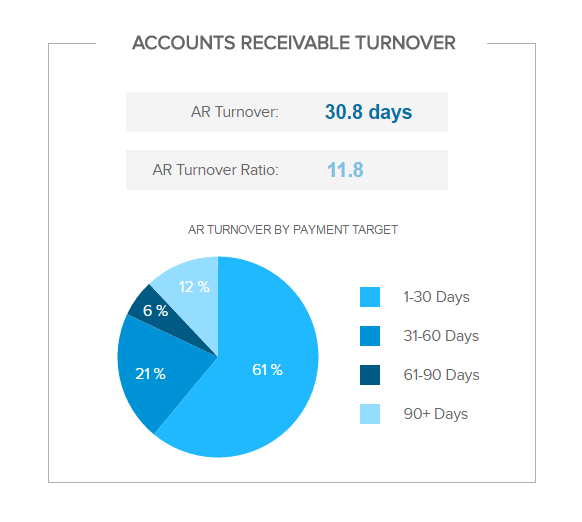

It isn't always this black and white, however. Often it is assumed that if you have a high accounts payable turnover ratio, you are more reliable and stable in paying your accounts payable outstanding credits. Is a higher accounts payable turnover better? A lower ratio can show that you either are paying your debts slowly or have special credit terms with your vendors. Knowing the average number of times you are paying back your vendors on time can help you know if your AP process is running smoothly, something often reflected through a high ratio. Your accounts payable turnover can help you determine if you are using favorable credit terms, paying your suppliers back promptly, or it can be used to judge your creditworthiness. $500,000 Net Credit Purchases / $27,500 Average Accounts Payable = 18.2 AP Turnover What does accounts payable turnover tell you? It had $25,000 in payables at the beginning of the accounting period, and $30,000 at the end of the period. To find your average accounts payable, you can look at the total of your accounts payable at the start and finish of your accounting period, then divide that by 2.įor example, the ABC Company had net credit purchases of $500,000. Net Credit Purchases (Total Purchases) / Average Accounts Payable = Accounts-Payable Turnover Ratio It is important to note that you can also use the cost of goods sold instead of net credit purchases depending on the situation, though this may not give you an accurate ratio. Within that timeframe, you will look at your net credit purchases (sometimes referred to as total supplier purchases) divided by your average accounts payable. You first select the beginning of the period and the end of the period you are measuring. Using the accounts payable turnover ratio formula is pretty straightforward. What is the AP turnover ratio formula? (with examples) This calculation is a good measure for seeing if there is a problem within the credit or payment terms given to suppliers. Note that this can be confused with the very similar accounts receivable turnover ratio, which measures the opposite - how often vendors pay back credits over a specific period, such as a fiscal year.

Usually, a higher ratio is considered better than a lower ratio, but there are exceptions. The results show a handful of things like identifying potential cash flow problems and looking at how often a company pays off its obligations. This calculation looks at how often you pay suppliers or creditors over a given period of time. This data can be critical for tracking your performance over an accounting period and can be looked at by investors to make essential decisions.Īnother one of these liquidity formulas is the accounts payable turnover ratio, which is often referred to as the payables turnover. These are both examples of liquidity ratios, and while there are many types of ratios, this type helps look at your ability to repay obligations. Another example is the acid-test ratio which looks at your quick assets and inventory instead of your current assets. These ratios help make accurate analyses that can look at the company's accounts' overall performances and help review the accounts payables process overall.Īn example of these formulas is the current ratio, which looks at your ability to use existing assets to pay off short-term obligations. A financial ratio breaks down the data within places like your accounts payable balance or balance sheet to help prevent your company from falling into financial distress. In an average accounts payable department, there are a handful of calculations that help determine the financial condition of your company's cash flow. Your accounts payable turnover can help you determine if you are using favorable credit terms, paying your suppliers back promptly, and can even be used to judge your creditworthiness.


 0 kommentar(er)
0 kommentar(er)
